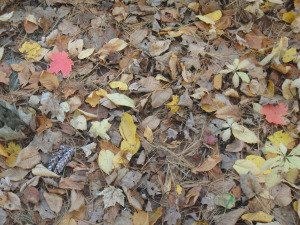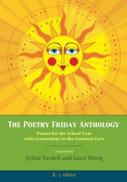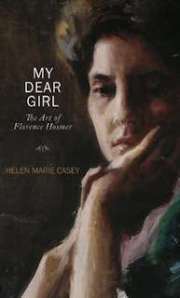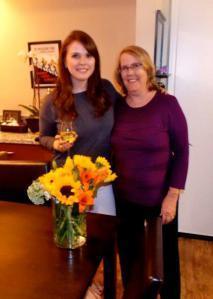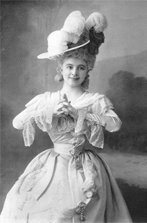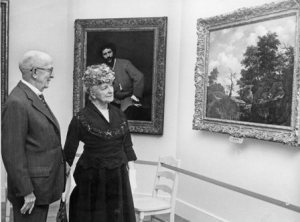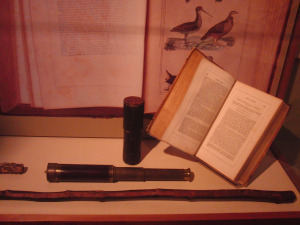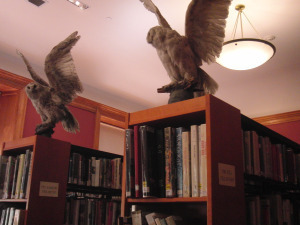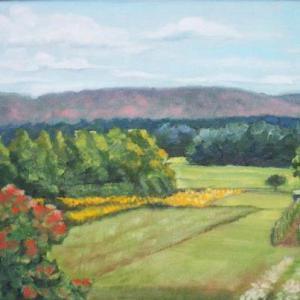Jeannine Atkins's Blog, page 23
November 2, 2012
The Goddess Kali at the Computer
Yesterday I had lunch with a friend who told me about drawing day after day until at last the girl under her hands felt like the one who’s been in her head. She’s now happily progressing through a dummy for a picture book. This made me think of hands rubbing over and over, trying to start a fire. It made me think of me the last two weeks, hunkering down with an idea both murky and compelling. I started scenes, but they were still warm on the page when I recognized they didn’t have the spark that would tell me, Yes, that’s mine. I’m a believer in storing up ideas so I don’t have to face too many blank pages, but the notes I’d put under labels with a variety of attempts at titles didn’t seem like ones that would grip me for the year or so it may take me to fulfill them.
Starting a new project seems more full of stops than starts, whether or not that’s mathematically possible. I recently celebrated finishing a major project, but this was quickly followed by an uncomfortable hole, which felt drafty no matter how much I tried to call it freeing. I’ve got my main character, sort of, a theme, and a pale vision of a rickety plot, and have spent mornings dreaming up sisters, brothers, and friends who I kill off by the afternoon. Dads and a magical bird come and go.
Dreaming up ideas means you have to be willing to let many go. One of the students in my writing for children class is an illustrator, and when I recently brought in colored pencils, she asked where was the eraser. Sorry, I said. She told me she always drew with an eraser in her other hand, which opened and closed around nothing. She managed, because she’s flexible and kind. This reminds me of how I don’t even think of how close the delete button is to my pinky. It reminds me of Kali, the Hindu goddess of destruction and creation, who makes space for the new by clearing out the old.
Then three days ago I had an idea that still makes my eyes shine. I told Peter, around four in the afternoon, about an hour before I had to leave the house, that I was going to my writing room to write, not delete. And I did. Yesterday I might have let more words stay than I struck out. I don’t know what I’ll get today, but I do know that I have to write a lot of trite, flat, wishy-washy, just plain bad scenes before a plot snares or sparkles. So I’ll continue with my Kali files, the scenes that no one but me will likely ever see. And I let one of my favorite goddesses rant, so she will be my friend.


October 24, 2012
Keeping the Peace
When you “finish” writing a book (I can’t even think “finish” without feeling my lips pucker to form quotes), it seems some people expect revelry, and there is a lovely sense of feeling one shoulder’s fall to more normal levels. Much has been put aside while working on last chapters that needs tending. Days quickly get filled, and it won’t be long before I start obsessing about the status of the manuscript in someone else’s hands or Kindle. But I’m determined to spend some time enjoying a spaciousness available after hitting “send,” looking at the leaves, now mostly fallen, but fragrant.
Yesterday I wrote with friends in a café where we smelled bread baking, and I drank this latte.
My friends were writers, with projects representing the various states of a writing life. I worked on an editing project, Linda impressed us with her maps blocking out structure for a novel, Cindy quietly revised, and Jo pulled together a talk about her work. The largeness of it all the tasks for one book can make one feel overwhelmed.
But driving home past colorful mountains, I let my thoughts drift toward an unborn novel. I’ve been tucking away thoughts as quietly as I pick up an occasional leaf, though it will dry up in the pocket of my flannel-lined jacket. I’ve been letting thoughts come, and letting them go, in the spirit of autumn, when trees show off, then step back. I’ve been trying to look close at what feels as mysterious as this exposed log.
My pace is slow. I’m planning, but in a loose way, letting a new idea shuffle past the old, letting the old ones drift away. A novel can be daunting – and I still swear I’ll never again write one as long as that last one – so I’m trying to trick my way in with a page here, a page there – really “there,” often way past that page “here.” I’m fooling around with characters, ideas, and, yes, action – a word that was passed across the table yesterday – and like a bystander who’s not terribly invested, seeing what will happen. Maybe just leaves blown aside. Maybe a book.


October 19, 2012
The Poetry Friday Anthology
The Poetry Friday Anthology was the dream child of Sylvia Vardell and Janet Wong, who have compiled other great collections. In the introduction, they advocate reading poetry first and foremost for pleasure, but also point out ways reading poetry fulfills the Common Core standards for kindergarten through grade 5. Each poem is accompanied by five discussion questions, which relate to language arts skills, personal experiences, or comparisons to other poems. I love how easy this makes it for teachers to add poetry the day, providing enough poems for five minutes on each Friday of the school year. These poems are written by dozens of well-known poets, and many are full of humor and enchanting twists, providing ways for students to bond over the language, the topics, and some original silliness. You can see samples on the Poetry Friday Blog.
I’m happy to have two poems included. Here’s one followed by a picture of an inspiration (which Peter took when we were walking a few days ago).
Good Dog! Bad Dog!
Good dog never wakes us up.
Yip! Bad dog jumps on the bed.
Good dog shakes for a biscuit.
Bad dog snitches jam and bread.
Good dog chews dog toys.
Bad dog chews the chair.
Good dog comes when called.
Bad dog doesn’t care.
Good dog snuggles by my feet.
Bad dog steals my heart.
No, that’s our good dog!
Some days we can’t tell them apart.
Copyright © 2012 Jeannine Atkins. All rights reserved.
For Poetry Friday links, please visit Irene Latham at Live Your Poem, where she’s featuring a collaborative zoo poem (I wrote a goat couplet) to celebrate her new novel. which has a zoo setting: Don’t Feed the Boy.


October 17, 2012
The Silence In Between
I spent part of this morning moving some books from piles to shelves, while some were bagged for the next library book sale. But the aloe is still leaning over under the weight of its thick, prickly self, waiting to be repotted. The garden is still waiting for me to appear with clippers and rake. I won’t mention housework. After finishing my novel, I did tend to some chores, but I’m trying to make myself available to the muse, too. And she likes to find me on the window seat, looking unproductive.
There’s a silence before a new work comes that can feel prickly, no matter how I longed for it was while hunching over a hefty stack of pages. There’s been a goal in mind, a sense of how I want this big thing to look. Now my novel has reached that state. Peter has almost finished kindly combing it for errant letters, missing articles, apostrophes doled out too randomly, the occasional if that should be it, or she’s that need a name. He’s put gentle question marks beside too flighty poetic flights. He makes me smile with his sweet manners on my pages: It might be more clear if you had a verb in that sentence. Um, yes. And I’m glad for his occasional praise. “This may be the best description of a color I ever read.” Yay! Anyway, I think we’ll have finished tidying by tomorrow, when I expect the drama of hitting Send. And already I’ve set blank paper before me, which needs to get filled one page at a time.
Empty paper can bring up panic, which I’m trying to ride out with deep breaths, when I’m tending to shallow ones, and a still bottom, when I feel wiggly. The aloe and dried plants can wait just a little longer, while I mull my way to and through false starts, dead ends, ideas not quite interesting enough. I’ve written a lot of notes about a girl and a place and their particular powers, but I’ve kept myself from opening that file. And my stillness (well, a few more books were re-shelfed) is paying off a bit. I’m catching a few birds that may or may not be important. An older sister. An aunt. Rocks and a clay-bottomed river. These are enough to begin with. I scribble around them, as if they might mean something.
Time will tell, so that’s what I’m trying to give the process. Saying no to the new yarn, the ever-so-attractive unread books, the sack of flour and cranberries, the spade. I’ll get to them, but for now, I’m trying to be as quiet as the paper and the patient, sprawl of roses that I promise to cut back before winter.


October 15, 2012
My Dear Girl: The Art of Florence Hosmer
Many novels begin with the premise that stories of ordinary lives will be worth a reader’s time. But biographies and some memoirs tend to be about people who have stepped beyond what’s familiar into some kind of celebrity. What I loved about My Dear Girl: The Art of Florence Hosmer by Helen Marie Casey was its assumption that it can be well worth retracing the footprints, or in this case, paintings and letters, of someone who’s been generally forgotten. I also liked the author’s inclusion of her own musings about the nature of art, history, and fame.
Florence Hosmer lived from 1880 to 1978, and left about 500 paintings, primarily portraits. She managed to earn a living, finding support from relatives and a sustaining network of friends, which is reflected in the title: the author read many saved letters, which often began with that warm salutation. Florence Hosmer’s own letters have mostly been lost, thrown away, or perhaps saved in unknown places. The location of many of her paintings is also a mystery.
Helen Marie Casey examines and beautifully describes paintings that have been saved, and lovely examples are photographed in the book. She looks through Florence Hosmer’s house, which was willed to the town of Sudbury, rifling through letters, photographs, and drawers. She finds, “After a while, even beloved objects have a way of metamorphosing into simple artifacts.” I like the personal tone as she quotes some letters, than speculates about possible responses, with bigger questions about the topics of art, story, and lastingness set off in italicized paragraphs. After spending time in her house, she reports, “I have come under her spell, as have so many others, and I hold the knowledge of her persistence, her empathy, and her lively sense of humor as an important part of what she has bequeathed.”
This slim book chronicles a choice to commit oneself to creating beauty, and we learn about how Florence worked, took classes, exhibited, submitted work to juried shows, sold many portraits, and wrote letters requesting payments, which she didn’t always receive. The author explores what it means to be an artist, and to lack much acclaim, suggesting that, “Even one brilliant work of art has the power to take hold of us and ensure that the creator will last as long as the work endures.”


October 11, 2012
Finished!
Finishing is a good verb, even if it’s imprecise. It can scoop in a lot of time, and usually implies a circle, though one hopes they get quicker with each round. Maybe you can guess from my plans for the next few weeks what I finished?
Get a new toothbrush. Bake. (Apple cake or pumpkin chocolate chip cake?) Hang out with my husband. Clean the house. Tend to the garden. (i.e, wrestle with sumac and bittersweet.) Read poetry. Write poetry. Read books not set in the nineteenth century. Climb October Mountain. Blog more (it’s sad that I’m writing from a file I’ve named spring 2012). Mull over and wade into new projects. Wait. Try not to obsessively check email. Savor the yellow and orange leaves before they’re gone. Remind myself not to write another 500 manuscript-page novel (which I think is about the right length for this historical novel for adults).
Which is what I finished, until, you know, I start getting pulled into again. Peter is kindly using his eagle eyes to go over my draft, but I hope to send it to my agent next week. And in a spirit of celebration, I broke away for a trip to see my daughter. We spent a weekend in Santa Barbara by the beautiful sea, and returned to her home. where we ate good food with great people. Em’s friend Jesus took this picture of us with some lovely fall flowers he brought us, with a light L.A. laugh around that word “fall.” Now I’m back to fall in Massachusetts, which means serious scarves and fingerless gloves. With a few picture books on my mind.


September 19, 2012
Ancient Chinese Art… and a Little Early Twentieth Century Gossip
Peter and I recently enjoyed seeing Unearthed: Recent Archeological Discoveries from Northern China at the Sterling and Francine Clark Institute, a show which will be there until Oct. 21. I liked the little statues of oxen, people playing music, camels, holy people and warriors.
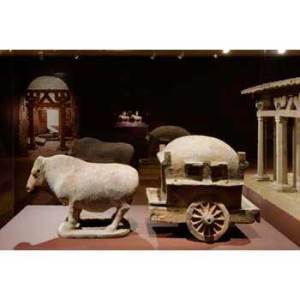 Much of the art blends references to Daoism, Buddhism, and Confucianism, and some Tang Dynasty art mixes imagery from China, such as peonies and vines, with plants more common to the Mediterranean, such as the acanthus and palmettes. Below is a sarcophagus seen for the first time outside of China. Apparently tombs were to reflect the lives of those gone, with some important objects recreated in miniature. An ancient sage was quoted: “the deceased was treated as though dead and yet still alive, as though gone and yet still present… Well-cared for spirits meant good fortune for the living; neglected spirits turned into implacable ghosts.”
Much of the art blends references to Daoism, Buddhism, and Confucianism, and some Tang Dynasty art mixes imagery from China, such as peonies and vines, with plants more common to the Mediterranean, such as the acanthus and palmettes. Below is a sarcophagus seen for the first time outside of China. Apparently tombs were to reflect the lives of those gone, with some important objects recreated in miniature. An ancient sage was quoted: “the deceased was treated as though dead and yet still alive, as though gone and yet still present… Well-cared for spirits meant good fortune for the living; neglected spirits turned into implacable ghosts.”
I learned from the placards, which Peter tells me those in the museum business call tombstones, that museum co-founder Sterling Clark was a civil engineer who went on an expedition to China in 1908, along with a naturalist, a meteorologist, an artist, and some others. They didn’t take any artifacts, but he later wrote a book about some findings. As I wondered what drew him to China, I unearthed a bit of the Clark family history, which enhanced my appreciation of the venerable museum. Apparently Sterling Clark’s wealth came from a grandfather who was a lawyer for Singer, and who helped implement payment plans that made the sewing machine affordable for many. Much of this fortune was divided between four brothers in Cooperstown, New York. After college, Sterling joined the army and ended up seeing some of the Boxer Rebellion in China. Afterward, he wanted to go back and explore. Then, without much desire to return to Cooperstown, he went to Paris, where he fell in love with Francine, who acted in the Comédie-Française and cared for her little girl.
Eventually they got married. (a sentence I’m borrowing from Edith Wharton’s The Age of Innocence, in which she comments that “eventually” is dragged out with innuendo.) Family divisions ensued, but the couple spent much of the rest of their lives happily amassing art. Williamston, Mass. was the lucky recipient of their collection, a generous endowment, and a building where Sterling Clark’s ashes are buried under the steps.


September 17, 2012
How Personal Should a Fiction Writer Get?
The first day of the writing course I teach at Simmons at the Carle, it seemed clear that most students would need little coaxing to reveal their heartfelt concerns. But in the writing journals submitted to me, some confided that they found personal writing hard. Someone (not a student) asked why I chose to begin with memoirs, taking a look at Roxaboxen and an excerpt from Eudora Welty’s One Writer’s Beginnings, and doing some exercises that ask writers to look back. Many of us begin from personal history, even if we don’t end there. Memory can provide and fill in, though it shouldn’t limit our choices or dictate fiction’s structure. And when we write about anything whatsoever, we tap into our mind, and what’s there is there. It’s best if we can welcome it all in early drafts, rather than trying to swat away some memories. It’s too early to decide what’s a nuisance and what’s a gift.
During the first week, I ask students to read Charlotte’s Web and The Watson’s Go to Birmingham –1963 for a thousand good reasons, but today I thought of the novels we start the course with in terms of the lives of the writers behind them. E. B. White wrote of often feeling safest hiding out in the horse barn when he was a child, and later in life, he lived on a small farm in Maine. Details he cherished certainly add to the novel’s setting and mood. Maybe E.B. White was also Charlotte: but he wasn’t afraid to make changes, such as human to spider, as well as writing about what he knew. And while Christopher Paul Curtis shares a birth year, childhood home, and family circumstances with Kenny in The Watson’s Go to Birmingham –1963, maybe it’s in places that the truth veers where the novel is most moving.
This week, we’re reading Bridge to Terabithia by Katherine Paterson and See You at Harry’s by Jo Knowles . Some key events in the first novel were inspired by a tragedy suffered by Paterson’s son, to whom the novel is dedicated. And my friend Jo Knowles has written on her blog about drawing on some childhood experiences for See You at Harry’s. I chose to start the course reading good novels for readers about ages 7 to 14, and thought there was some diversity with pigs, spiders, and humans, and more boy characters than I always naturally select. But I suppose putting together a syllabus, like writing, draws from the subconscious as well as more academic intent. Now I realize that not only do all four books draw from the personal, but all touch on death in various ways. And our class had already discussed the lizard grave in Roxaboxen (a student mention a teacher who glued those pages together), and the darkness that deepens as we read through Goodnight, Moon.
I believe writing calls for courage to face everything that moves into our minds and hands. Old feelings and new fantasies, grief and hope, the real, imagination, and truth. The mind doesn’t necessarily draw clear distinctions between the personal and imagination, but leaves lines for the organizing mind to draw later. Creative writing is not for the faint-hearted, and I should add maybe not either for those calling on courage to face other challenges. So we start out, all windows and doors open, and with an expectation of kindness from everyone around the table.


September 14, 2012
My Day with Henry David Thoreau and Louisa May Alcott
This week I went to the Concord Museum to see some of the photographs Annie Liebovitz took for her new book, Pilgrimage, which is a record of some of her inspirations, a looking back and inward, perhaps more reflective than the portraits of rock stars or other extravagantly dressed people she’s put on the pages of Rolling Stone, Vanity Fair, or Vogue. As I turned from the stairs, my attention was caught by a photograph of a dress that Marian Anderson wore in concert. The photograph is as long as a dress, a slash of red silk through terracotta, gold, bronze, and cream fabric that stretches across four pages in the big book of these photographs, with some text, such as the short story of how Marian Anderson sang at the Lincoln Memorial after the DAR excluded her from a concert hall.
Some photographs were taken at Louisa May Alcott’s home, across the street, including a trio of dolls on a toy sofa and gods and goddesses May Alcott drew on her bedroom walls. Places shown are often from a famous person’s childhood, death, or archives, such as stacks of trunks that belonged to Martha Graham. Some are from midlife: we see both Elvis Presley’s childhood home, and a TV with a screen he shattered with his gun; we see the door that made Georgia O’Keefe choose her New Mexico home and tray of homemade pastels. Annie Oakley’s boots and a cardboard heart with a bullet hole are given their own alcove.
Most of the people and places represented in the show are from the United States, though I liked ones representing artist Vanessa Bell and her sister Virginia Woolf. The River Ouse, the site of the writer’s suicide, was so blue, both eerily calm and menacing. Lines of waves’ shadows seemed echoed in the photograph of the top of her bare, ink-stained wooden desk. Throughout the gallery, I had a sense of how getting closer to an object can turn around a view of history, and a pilgrimage of moving forward by stepping into the past. I loved the book, and I’m happy I made it to the show, which is there until September 27, for what I believe is the only New England display of this work.
I also looked around the museum, and was particularly taken by the room devoted to Thoreau, maybe especially after looking at Annie Lebovitz’s photograph of the Chinese cane bed he slept on in the cabin at Walden Pond. Here it is, along with displays including his flute, pencils from the family factory, a pair of snowshoes, and keys from the Concord jail. Below are his waking stick, a spyglass, a bird guide, and a tap for birch trees.
Thoreau seemed to accompany through my day, for when I did some research in the Concord Library, a copy of his journal was open to the day’s date, though in 1853. And the nonfiction room bears his name, lots of pictures, and these owls.
Finally I was in the mood for another visit to Orchard House, where Louisa May Alcott wrote Little Women, and I turned out to be the only person on the tour. The beautiful young woman wearing loops of pearls couldn’t have more gracious, smart, and kind, offering me details, but stepping back from all the old stories to let me just look to my heart’s content, enjoying a more intimate spirit than I’ve felt when the rooms are filled, though I’ve never been on an Orchard House tour, starting with the one I took with cousins when I was about ten, that I haven’t enjoyed. The docents clearly are learned and adore the family, but also show a sense of humor and imagination that I think Louisa would have enjoyed, not being one to take herself too seriously. It was the end of the day, and I could hear staff laughing from a back room. There’s a sense of this still being a home, and not only historic: I noticed a big plaster bust of Emerson on the floor of a closet where a few old dresses hung. When I asked, the docent told me that work was being done on the school next door, and the busts of philosophers had been stored here and there.


September 13, 2012
En Plein Air
My friend Ellen Farley, who teaches high school art and runs The Art Studio, recently made time to enter a plein air competition at Nash Gallery in Easthampton. The rules went something like this: the scene had to be painted outside within the city borders, and paper or canvas had to be stamped at the gallery five days before the showing, so no one could work ahead. Peter and I went to the show, which had many wonderful pictures of gardens, fields, houses, and roads. I liked Ellen’s the best.
This painting didn’t win a prize, but Ellen said it didn’t matter. She told me she parked by the road, asked a farmer if she was still in Easthampton, and when he told her yes, and saw her easel, he offered to lead her on his tractor to a spot he thought even prettier. Ellen was grateful to have spent two afternoons standing among Monarch butterflies looking at fields and a mountain she’s often seen from many different points.
I’m not as zen as I’d like to be. I can’t help wishing Ellen had won if not grand prize, at least one of the gift certificates offered by local businesses. I want my writing to get published and I want my candidate to get a second term in office. But I admire the way the Impressionists held to a credo of “no juries, no awards” to favor artistic freedom, and I try hard to remember that afternoons like Ellen’s painting in the field are the prize. As I start teaching writing again, that’s what I want my students to know, too. Sitting around the table, writing in ten minute spurts, daring to read something fresh aloud: our lives are pretty good.



